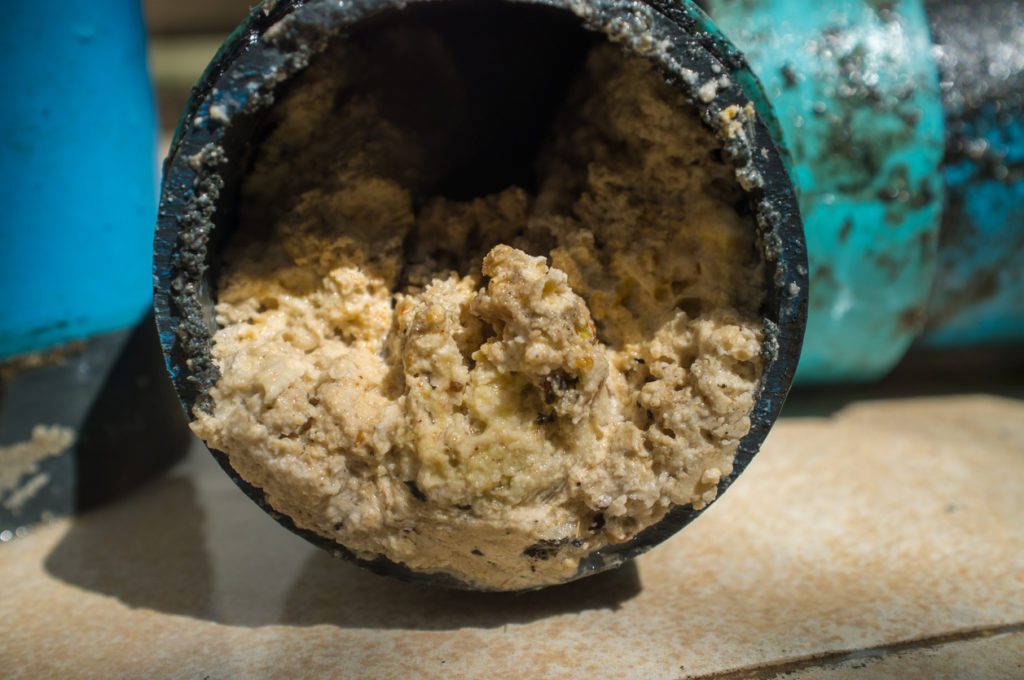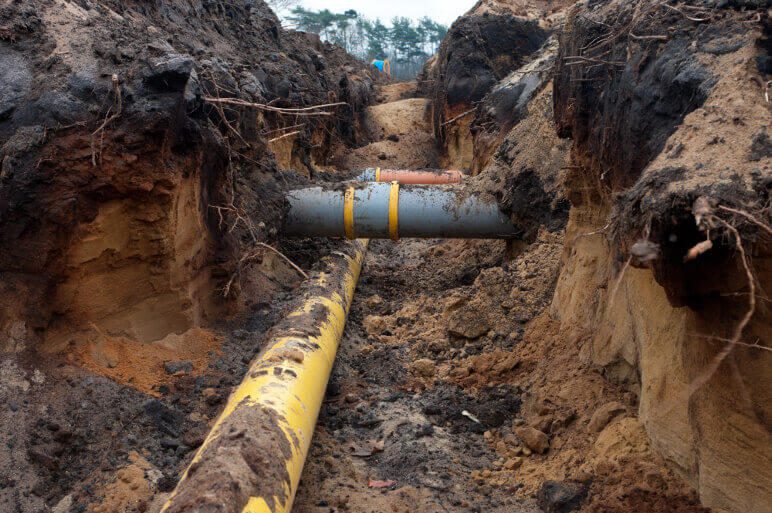Like most homeowners, you probably don’t think about your sewer line very often. It might even be the last thing on your mind—that is, until there’s a problem. Then, all of a sudden, you need to know everything about sewer lines.
Before you experience a plumbing emergency, it’s essential to know where your sewer line and drain is located. This can help you troubleshoot and fix the problem quickly, maximizing your chances of a speedy repair.
If you find yourself needing sewer line repair or sewer line replacement, it’s essential to know what to do. With basic knowledge and preventative maintenance, you can bring sewer line problems to the bare minimum. Read on to learn about the sewer line and how to find it.

What Is a Sewer Line?
A sewer line is a pipe that carries wastewater from your home to the main sewer drain in the street. It’s also sometimes called a lateral sewer line or a sewer drain.
Your sewer line connects your home’s plumbing system to the main sewer line in your street. Everything that goes down your drains—from toilet flushing to sink draining to shower water—exits your home through the sewer line.
The sewer line is usually made of PVC piping, which is durable and resists corrosion. But, over time, this piping can deteriorate, especially if it’s not installed correctly or if tree roots have infiltrated the line. When this happens, you might notice problems with your drains, like slow draining or water backup.
Suppose you have a problem with your sewer line, getting a sewer line replacement or sewer line repair as soon as possible is vital because a broken sewer line can cause all sorts of issues, from sewage leaks to flooding. Not to mention, it’s just generally unpleasant and unsanitary. No one wants raw sewage in their home!
How Do You Find Yours?
Now that you know what a sewer line is and why it’s important, you might wonder how to find it. After all, it’s not like you can dig around in your yard until you hit the pipe. Or can you?
There are a few different ways that you can locate your sewer line:
#1. Look at Your Property’s Plat Map
Your property’s plat map shows the location of all the significant features, like your house, driveway, and—you guessed it—sewer line.
If you don’t have a plat map, you can try looking at your property’s sewer blueprints. These are typically held by the city or county in which you live. If you’re having trouble finding them, you can always call your local sewer department and ask for help. Check out AcreValue for a rough outline of your property lines.
Once you have your plat map or sewer blueprint, locate your house on the map. Then, trace the sewer line from your home to the main sewer line in the street. This will give you a general idea of where the line is located on your property.
Of course, if you’re not a fan of maps, there’s always the old-fashioned way—digging. If you’re willing to get your hands dirty, you can try excavating a small yard section to locate the sewer line. Just be sure to call your local utility company first to avoid damaging any underground cables or pipes.
#2. Locate the Cleanout
The cleanout is a capped pipe that provides access to your sewer line. It’s usually located near your home’s foundation, and it may be either inside or outside the house. Once you’ve found the cleanout, you can use a plumbing snake or a sewer auger to clear any blockages in the sewer drain.
After you’ve located the cleanout, the next step is identifying the main sewer line. The main sewer line is the pipe that connects your home’s sewer line to the municipal sewer system. It’s usually located in the street in front of your house.
#3. Check for Obvious Signs
There are a few obvious signs that can indicate the location of your sewer line. For example, finding the cleanout plug (a cap covering the sewer line opening) is a good indication of where the pipe is located. You might also see a manhole cover, which is another sign that you’re close to the sewer line. These are good places to begin your search.
#4. Look for Changes in Elevation
In many cases, the sewer line will run parallel to the house, so you can use changes in elevation to help you locate it. For instance, if you see a sudden dip in the ground near the foundation of your house, it is likely where the sewer line is located.
#5. Follow the Path of Your Drains
Another way to find the sewer line is to follow the path of your drains. Trace your gutters from the point where they enter your house all the way to the main sewer line in the street. This will give you a good idea of where your property’s sewer line is located.
#6. Call a Professional
If you’re still having trouble finding your sewer line, you can always call a professional plumber for help. They will have the experience and equipment to locate the pipe quickly and efficiently.
After finding the sewer line, mark it with a piece of flagging tape or a marker, so you’ll know where it is in the future. This can come in handy if you ever have a plumbing emergency and need to shut off the sewer line quickly.
Why Is It Important to Know Where Your Sewer Line Is?
If you are wondering why it’s important to know the location of your sewer line, here are a few good reasons:
It Can Help You Avoid Damage
Knowing where your sewer line is will help you be careful and not damage it when doing yard work or other activities. For example, you’ll be careful to avoid driving over it with a lawn mower or digging in the area.
You Can Access Emergency Service Faster
If you have a sewer line emergency, knowing the location of your sewer line can help the repair crew find the problem quickly. This knowledge is fundamental if the damage is severe and you need to get the sewer line repairs done as soon as possible.
It Can Help You Avoid Extra Charges
Some people out there may try to take advantage of homeowners who don’t know where their sewer line is. They may say they need to dig up your yard to find the line and then charge you an exorbitant fee for the service. If you know where your sewer line is, you can avoid paying such high charges.
Common Issues with Sewer Lines
Regarding sewer lines, an ounce of prevention is worth a pound of cure. Whether your sewer line is made of clay, plastic, or metal, it’s susceptible to damage and problems over time. That’s why it’s essential to be aware of the common issues that can affect your sewer line so that you can take steps to avoid them.
Also, if you know what to look for, you’ll be able to identify potential problems early on and get them fixed before they turn into more significant issues.
Here are some of the most common issues that homeowners face:
Blockage
One of the most common issues that homeowners face is a blockage. It can be caused by several things, including grease build-up, tree roots, and debris.
If you have a blockage, you may notice that your sewer drains are draining slowly or not at all. You may also see water backing into your tub or shower when you flush the toilet.
Often, blockages can be removed with a plunger or a plumber’s snake. But if the blockage is too severe, you’ll need to have a professional plumber remove it, a process that may require that you go for either a sewer line repair or sewer line replacement.
Tree Root Invasion
Tree roots attract moisture and nutrients in sewer lines and can quickly grow into pipes. This can cause blockages and damage, one of the most challenging problems to fix.
If you have tree roots in your sewer line, you’ll need to have a professional plumber inspect and remove them. This procedure is usually done by hydro jetting, which uses high-pressure water to remove the roots.
Grease Build-up
Grease from cooking can quickly accumulate in sewer lines; over time, it can harden and cause blockages. To avoid this, scrape grease from pots and pans into the trash can, and never pour grease down the drain.

Corrosion
Corrosion can cause weak spots in your sewer line, leading to leaks. To avoid this issue, have your sewer line inspected regularly.
Cracks, Leaks, and Breaks
Cracks and breaks are usually caused by corrosion of sewer lines, ground movement, and tree roots. If the damage is redeemable, a simple sewer line repair can fix it. But if the sewer drain has been damaged irreparably, you might have to consider a sewer line replacement.
Get in Touch With Dynamic Sewer & Drain Today
Even if you take all the necessary precautions, sewer line problems can still occur. That’s why it’s crucial to have a professional plumber that you can rely on to fix the problem quickly and efficiently.
If you’re having sewer line issues or want to be proactive and have your drain inspected, contact Dynamic Sewer & Drain today. We are a professional plumbing company specializing in sewer line repair and replacement. We offer a wide range of services to meet your needs, and we’re always available to answer any questions.
Don’t wait until it’s too late. Contact Dynamic Sewer & Drain today!





